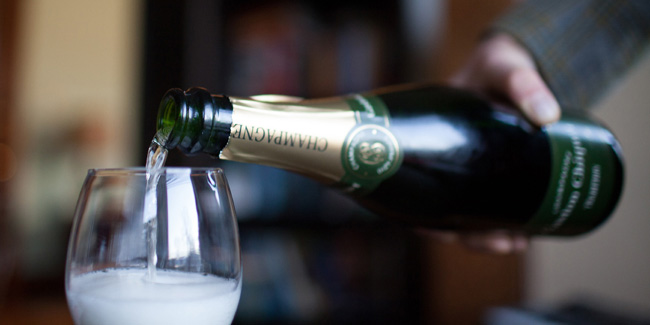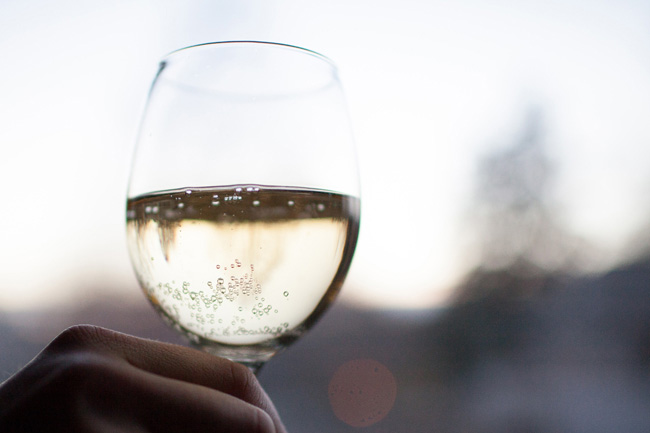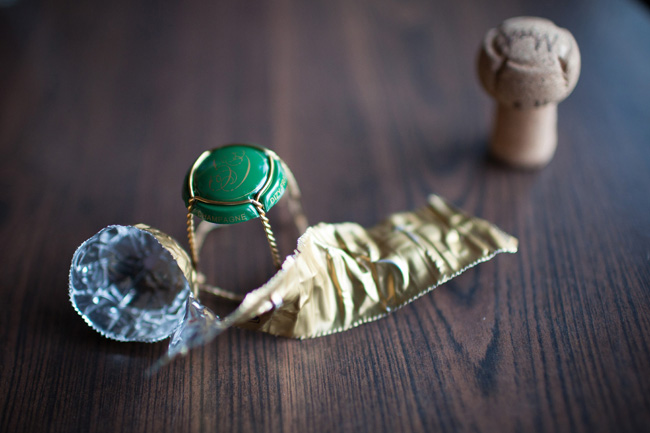
Among the more obvious signs of support for the local-seasonal-organic food movement is the growing recognition of small producers. Whether it’s a reaction to the ethylene-ripened tomato or the efficacy of engaging the local economy, there’s no doubt that consumers are becoming increasingly aware of production that values quality over quantity.
We regularly write about these purveyors and we’re lucky that the upper Midwest is full of them. But it’s an idea worth keeping in mind even when sourcing products that can’t necessarily be produced locally. Chefs are increasingly identifying products that reflect a sense of place, no matter where that place might be.
Nowhere is this concept of terroir more fetishized than in the wine industry. And the exact same tension between indifferent products from large conglomerates and quality small-scale production is found in Champagne — the legendary sparkling wine from the chalky hills 90 miles northeast of Paris.

That was the message from renowned wine importer Terry Theise. Late last month he led a tasting for a local group of wine buyers, sommeliers, and journalists to discuss why he represents the emerging category of Grower Champagne — or what he calls “farmer-fizz.”
“Restaurateurs are proud of their local sourcing, cooking seasonally and regionally, and identifying the farmers that make their ingredients. It’s wonderful,” said Theise. “But if you’re sourcing your food that way, then don’t buy your Champagne from LVMH or Frito-Lay. It’s a philosophy that should apply throughout your program.”
He’s referring to the Champagnes you’re likely most familiar with — Mumm, Krug, or Moët & Chandon, for example. These are the large Champagne houses (known as Grand Marques) that collectively own about 10% of the region’s 32,871 hectares of vineyard. Because of the quantity of wine they produce, they are negociants — buyers who source grapes from Champagne’s roughly 19,000 independent growers.
But some of those growers chose to vinify their own grapes. A farmer who does this is called a recoltant-manipulant (roughly “grower-producer”), and those bottles are marked with the small initials “RM.” There are around 5,000 RMs, many of whom make very average wines, and less than 200 are currently represented in the U.S. They currently account for little over 3 percent of the entire Champagne market.

So it’s a good bet that when you come across Grower Champagne in America, it’s because it represents the best of what this sliver of the market has to offer. These are wonderfully unique, terroir-driven wines, and Theise’s recent tasting displayed that beyond a doubt. From the cool, fresh quince and pear notes in Pierre Gimonnet’s Blanc de Blancs to the explosive, malty autumnal profile of Jean Lallement’s Pinot-heavy Brut, these wines were mostly compelling and, in a few cases, absolutely remarkable.
Theise claimed the difference between farmer-fizz and negociant Champagne is as clear as that between craft beer and Budweiser… and it all starts with knowledge of the raw materials. “When people talk about the ‘blender’s art’, this is what they mean,” explained Theise. “It’s the difference between blending from a small domain where you know all your vineyards intimately and blending at a mega-industrial complex. [With Grower Champagne] you’re not blending for uniformity.”
Grapes sold to negociants for use in their basic, non-vintage cuvées are often picked under-ripe because growers are paid by volume. To compensate in the winery, they’ll have to add bit more sugar. Couple that with constant racking, stainless steel aging, fining, and filtering, and the resulting wine can be rendered thoroughly indistinct.
But let’s say that the average consumer couldn’t taste the difference (though in a side by side comparison, you certainly could). With Grower Champagne there’s even an economic upside. “There are so many instances that when we choose the environmentally sensible option, we pay for the privilege,” explained Theise. “But here it’s not the case.”
“We always have the chance to make better or worse choices in the marketplace. I don’t want to be holier than thou, but this is an easy choice, it seems to me,” he continued. “Consider that a bottle of most commercial non-vintage Champagne costs about the same as a bottle of Grower Champagne, and yet these big operations produce millions of bottles a year and have economies of scale working for them. It’s cheaper for them to produce a bottle than it is for Mr. Lallement who makes 1,700 cases a year. Why then are the prices the same?”

You can certainly attribute some of that to marketing. Since luxury-brand conglomerates often own the Grand Marques, their wines can be priced on what the market will bear for prestige. It’s their truly excellent tête de cuvées like Dom Pérignon and Cristal that earn the rep, and their PR budget sustains the image. In one form or another, the markup on that Perrier-Jouët helps subsidize the $400,000 of free Champagne they supplied for the Kardashian wedding.
Most importantly than the cost, consider the unique nature of Champagne. It’s not an everyday drink. It’s one of celebration, or remembrance. It’s something for an occasion in which you have vested an emotional interest. Wouldn’t you want to celebrate with a drink that was produced in a manner that reflects that?
“The wines are good, you can learn the stories, you can feel good about buying them and drinking them,” concluded Theise. “I look at this as, ‘What’s not to like?’ There seems to be no downside.” So, if you’re looking to pop some bubbly during the holidays coming up, might we suggest:
Gaston Chiquet “Tradition” Brut N.V. — $49.99 at Surdyk’s
A plurality of Pinot Meunier in its makeup gives it a fleeting bread-yeast nose while the body is more floral.
Hebrart “Cuvée de Reserve” Brut N.V. — $44.99 at France 44
This Champagne is 80% Pinot Noir, and you can recognize it immediately on the nose. Theise calls it “Burgundy at a higher octave.”
Larmandier-Bernier “Tradition” 1er Cru — $39.99 (current sale price) at South Lyndale Liquors.
Beautifully creamy and a stellar value. South Lyndale has a pretty terrific selection of Grower Champagnes, and they use the term “farmer-fizz” on their shelf talkers.
In addition to the three shops above, stop by Solo Vino, North Loop Wine & Spirits, and Thomas Liquors for good selections. A few restaurants that are sure to have some farmer-fizz on the menu: Heidi’s, La Belle Vie, Alma, Meritage, and The Bachelor Farmer.


Thank you John! Not surprisingly, I could not agree more, and I think you laid it all out in clear and compelling fashion. Thanks for your promotion of all things great, local, and driven by integrity (Grower Champagnes included)! Cheers.